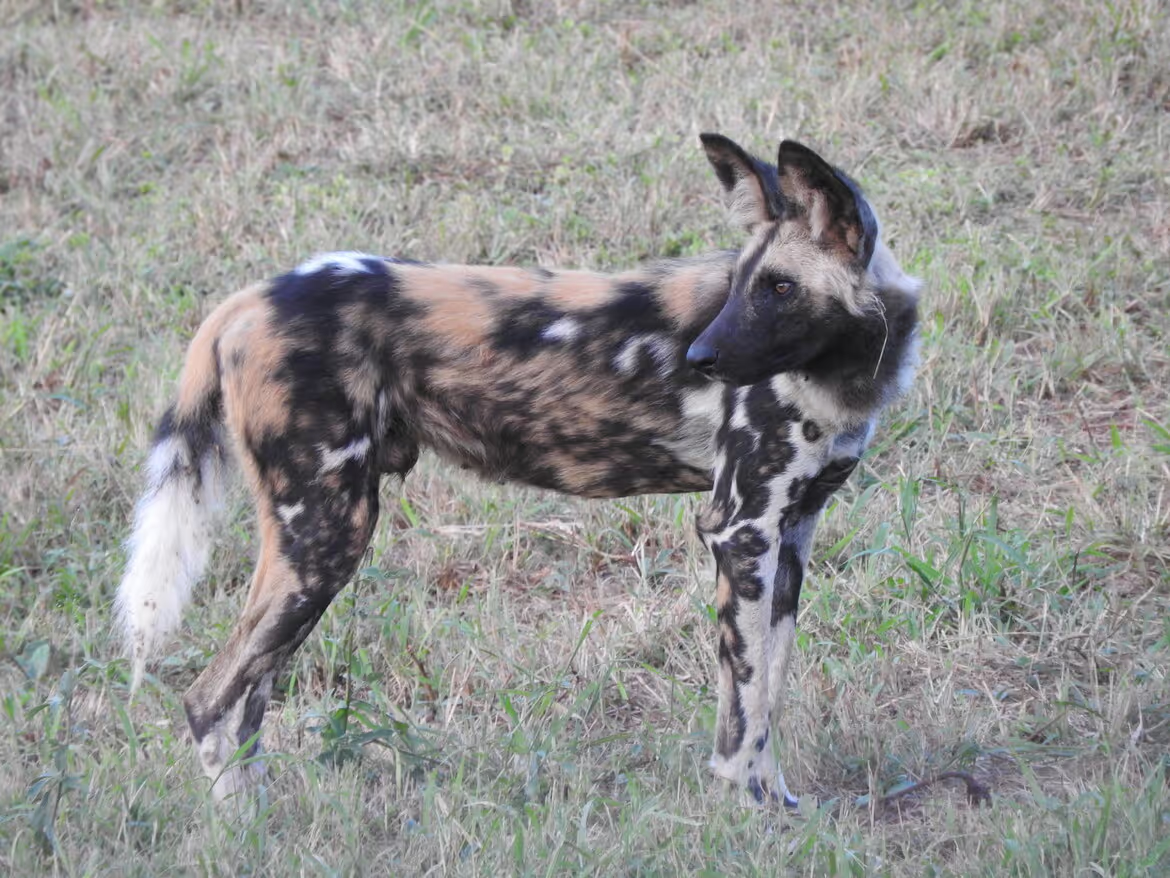The Wildlife ACT Monitoring Team on Manyoni Private Game Reserve in northern KwaZulu-Natal is excited to share the first sighting of the Manyoni Painted Dog pups. During the beginning of the lockdown period in South Africa, the Monitoring Team found that the Siyavikela Pack had started denning. In response, the Team had to keep an even closer eye on the pack during this time.

On the 16th of August, the Wildlife ACT monitors had their first visual of the pups and were able to sex two of them as males. The pups were born towards the end of April, becoming this newly formed pack's first litter.
"I came around the corner and saw the alpha female watching me. I was a bit confused as to her reaction to the vehicle", says Wildlife ACT Monitor Caitlin Markram. "Then the 3 pups appeared out of the bush and onto the road! I was so excited to see them I could barely talk on the radio when I reported it to reserve management."

Wildlife ACT assists Manyoni Private Game Reserve through the provision of advanced tracking collars that are fitted to individuals within the pack, and by providing the reserve with a full-time monitoring team. The Wildlife ACT Team is able to effectively monitor these animals using the VHF and GPS tracking collars. This intensive monitoring allows the team to keep an eye on pack dynamics, movements, ecological influences, disease and human-wildlife conflict issues, informing reserve management and allowing them to respond accordingly.
The Manyoni Painted Dog Pups from the Siyavikela Pack

The data collected by Wildlife ACT is useful to evaluate conservation efforts as, without it, we have no baseline data for comparison. Information gathered allows for informed decision making. If we understand the reasons for previous population declines, we can adjust management practices where possible, and in doing so, help to restore Painted Dog numbers.

With approximately only 550 Painted Dogs left in South Africa, these Manyoni Painted Dog pups are extremely important to the survival of this endangered species. African Painted Dogs face many threats including ongoing habitat fragmentation, conflict with human activities, persecution, snaring and infectious disease. They are the second most endangered carnivore in Africa after the Ethiopian Wolf. Painted Dogs need large areas to thrive and for populations to be genetic diverse and sustainable.

"What we need is to not only understand African Painted Dog behaviour and address misconceptions about them, but also to look at establishing new protected areas that can hold populations of these animals", says Senior Wildlife ACT Monitor, Pippa Orpen.
The ideal conservation strategy to protect any endangered species is to leave nature to its own devices and give wild animals enough space and suitable habitat to thrive. However, countless species have been wiped out by humankind over the years by persecution, disease outbreaks and land fragmentation.

With our wild areas shrinking and the human population burgeoning, the situation is only worsening for African Painted Dogs and many other wildlife species. This is why the efforts being made by the likes of Manyoni Private Game Reserve and Wildlife ACT to intensively monitor, protect and manage African Painted Dogs, is pivotal for their long-term survival as a species.
Wildlife ACT, in collaboration with our partner organisations, reflecting African Painted Dog conservation since 2008:
- 289 monitoring devices fitted.
- 1 220 414 km driven.
- 385 individuals relocated.
- 106 Painted Dogs released from snares.
- 54 individuals rescued/saved.
LEARN MORE ABOUT:



.jpg)
.png)






